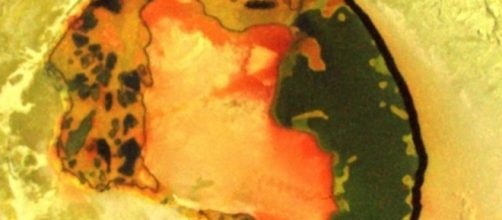In a study published in the multidisciplinary scientific journal Nature, researchers revealed that they solved the mystery of Loki Patera. This is the largest lava lake in the solar system, and it is located on Jupiter's moon Io.
Io and its lava lake
Out of all the planets and moons in the solar system, Io is the most volcanically active, so naturally it would have the largest lava lake. Io's interior is continually heated due to the gravitational pull of the massive gas giant planet of Jupiter and its biggest moons. This causes massive parts of the moon's crust to be covered in lava.
Loki Patera takes up more than 8,300 square miles on Io's surface and is larger than all but four lakes in the United States in terms of square miles.
Solving Loki Patera's mystery
The researchers used the Large Binocular Telescope (LBT), located in the Pinaleno Mountains in southeastern Arizona to make their observations of Io and Loki Patera. Researchers used this in conjunction with the movement of Jupiter's moons to help them get an amazing view of the lava lake and take its temperature all the way from Earth. It also finally helped solve the mystery of why Loki Patera's infrared readings seemed to fluctuate.
Back in March 2015 another one of Jupiter's moons -- Europa -- passed between Earth and Io.
This caused an occulation, which temporarily blocked infrared light from Loki Patera. An occulation is the complete obstruction of light from an astronomical body (star, planet, moon) by another astronomical body.
This enabled researchers to use the LBT to study the temperature of various parts of the lake. This is something that normally would not be possible, but Europa blocked out all irrelevant light from the area surrounding the lake. The next time this occulation will happen will be in 2021.
What causes the fluctuations?
The occulation helped to show that Loki Patera was at its coolest in the northwest part of the lake. It also showed that the lava lake is at its hottest in the southeast.
Using this small piece of information, researchers were able to figure out the fluctuations that were being recorded at Loki Patera.
At random intervals, the lava at the surface of Loki Patera will turn into a crust and cool into a heavy mass. This mass will then descend into the depths of the lake, thus exposing hotter lava. The exposure of this hotter lava is what was causing fluctuations in the infrared scans. The lava does this cooling in two different areas, with one part going counter-clockwise and the other going clockwise. This causes the crust to sink at slightly different rates across the lava lake.


